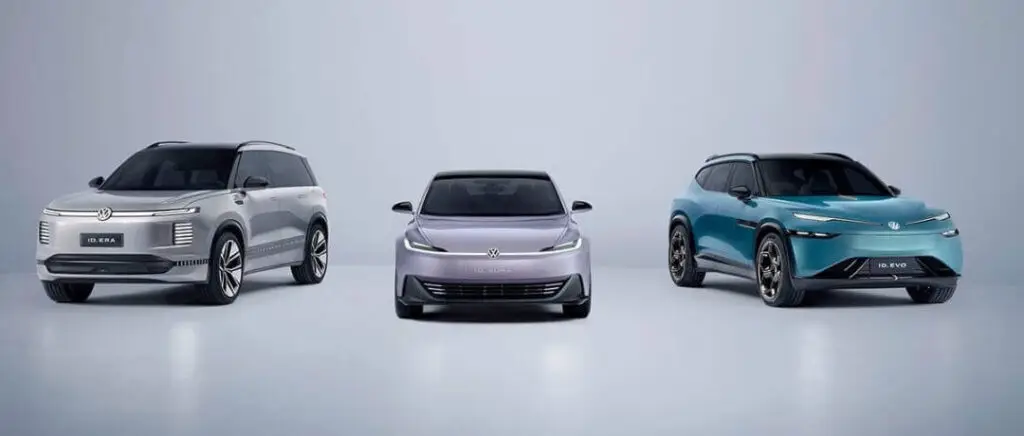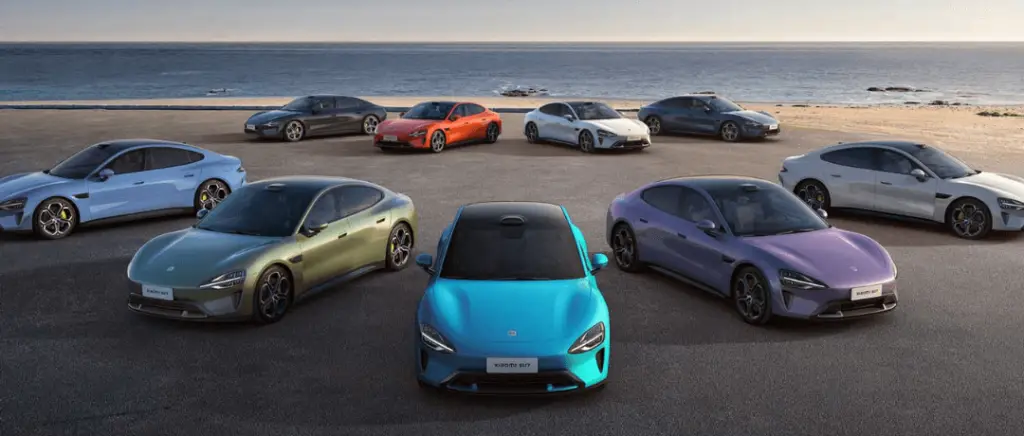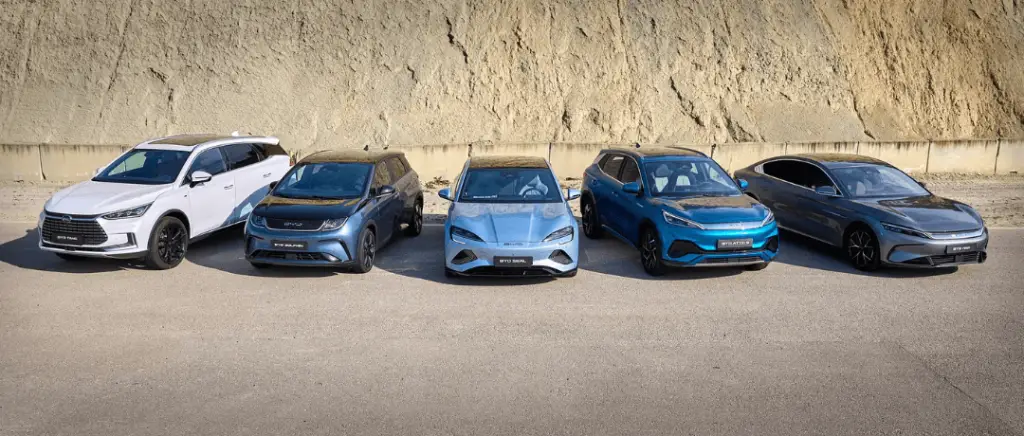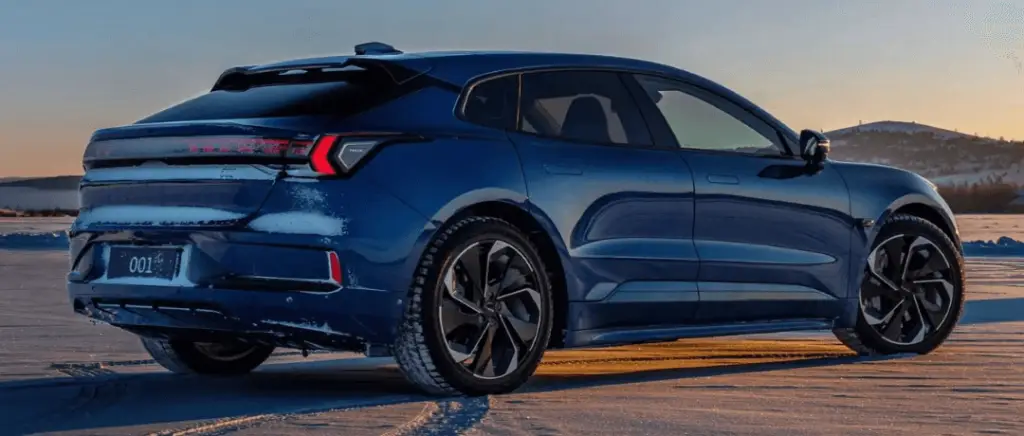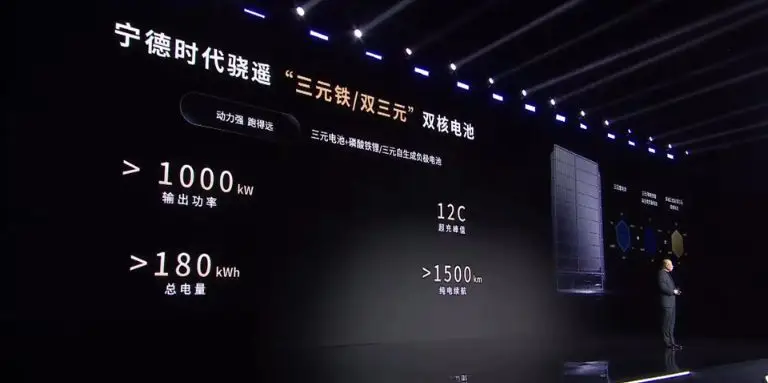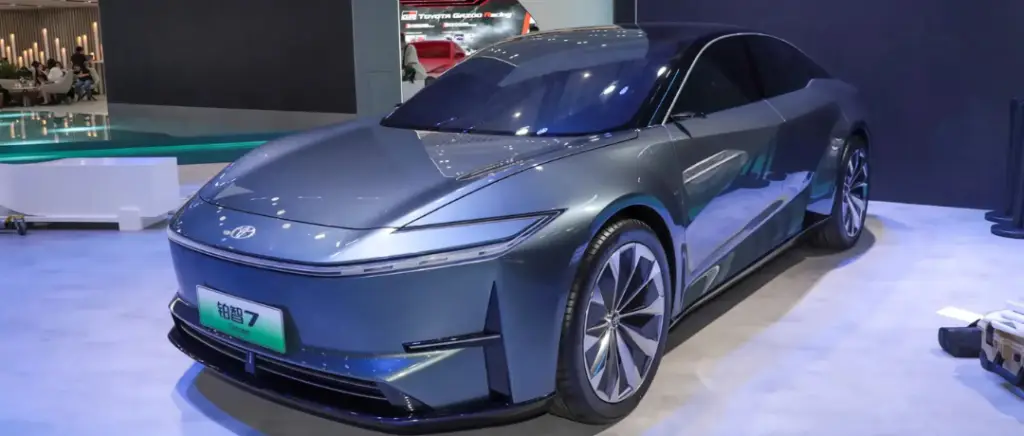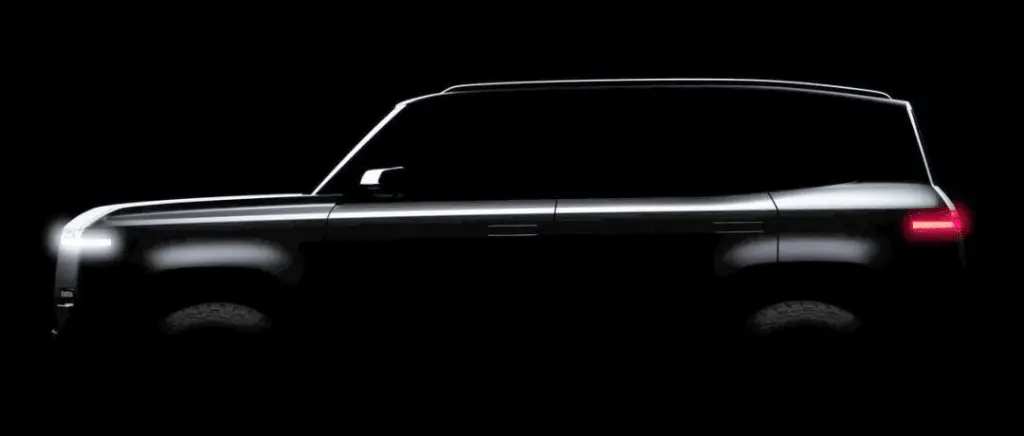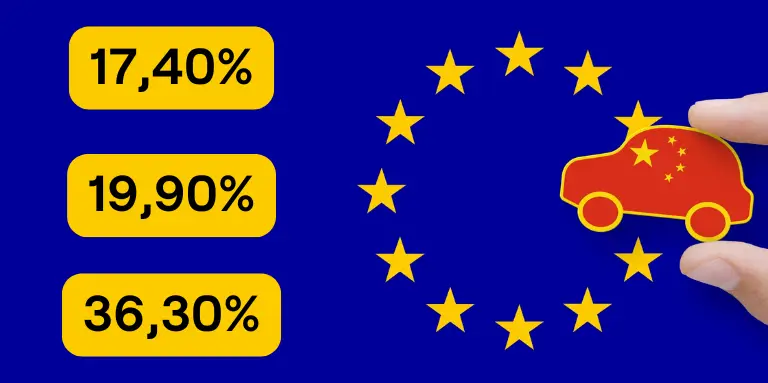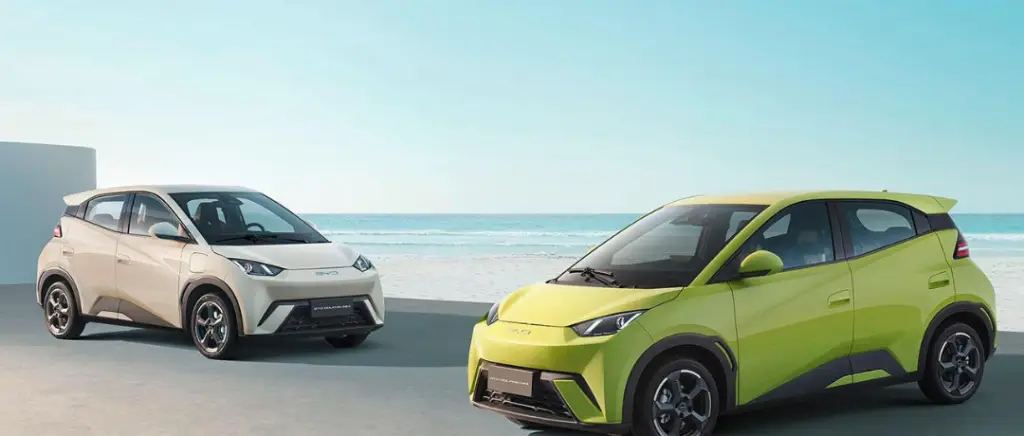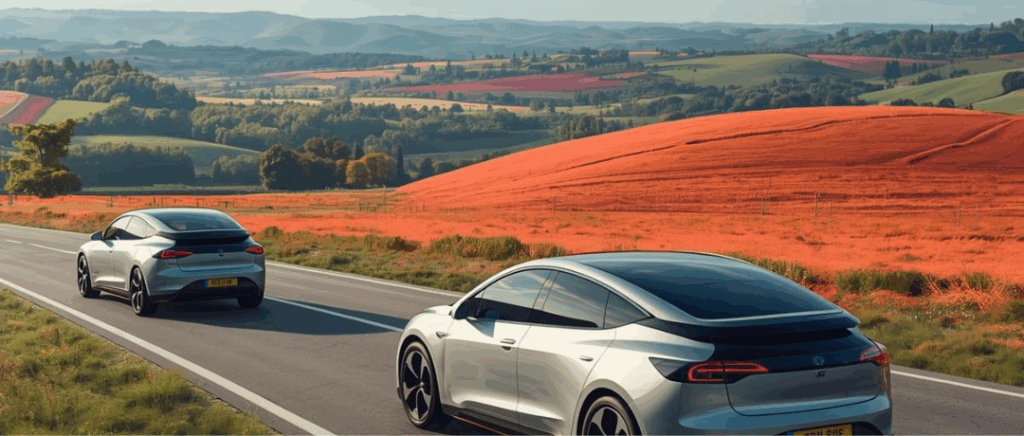Chinese giants go on the technology offensive despite tariffs
In Shanghai, Chinese carmakers are no longer hiding their ambitions. It is on display, asserting itself, making its mark. And it is making the global competition tremble. BYD, Geely, Nio, Xpeng or even Leapmotor have clearly taken advantage of the 2025 show to consolidate their technological leadChina is no longer a follower, it is now a prescriber.
"China has become the world's leading car producer, whereas 25 years ago, manufacturers didn't know how to make cars".
Christophe Périllat, Valeo CEO.
Worth noting Tech makes its way into the automotive industry! That's right, Xiaomi and Huawei (through its Harmony Intelligent Mobility Alliance brand) are taking part in the show for the first time with their electric vehicles, underlining their commitment to the environment. ambitions in this sector.
See also our article :
BYD, Geely and CATL: leaders in disruptive mode
As the spearhead of Chinese innovation, BYD is making a series of major announcements. Among the most striking: the series integration of God's Eyehis advanced driver assistance systemnow even on board the small electric city car BYD Seagull, available from 69,800 yuan (i.e. approximately €8,800).
This decision marks a turning point: breaking the link between innovation and priceand send a clear message to Teslawhose FSD system (Full Self Driving) is still charged at up to 64,000 yuan (around €8,100) in China.
See also our article :
At the same time, BYD steps up the pace on ultra-fast recharging its new 1 MW chargers can recover 400 km ofautonomy in just 5 minutesa feat already being rolled out on certain premium models.
To top it all off, BYD, already world leader in sales of electric vehiclesShanghai 2025 confirms its determination to shake up the codes of the premium segment. Its strategy: making top-of-the-range technologies accessible to as many people as possiblewhile maintaining a a clear technical lead over its competitors.
The presentation of the BYD "Ultima a electric coupé inspired by the Fang Cheng Bao Super 9 conceptunveiled for the first time. This sharply designed model takes on European icons such as the Porsche 911 head-on, with performance levels close to those of combustion-powered sports cars: a engine power of around 510 hpa hard acceleration and a optimised electrical architecture to maximise responsiveness.
Under the bonnet, the Ultima should feature the Blade Battery (battery LFP) already proven on models BYD Tang and BYD Sealcombined with BYD's 1 MW charging stations: 400 km recovered in 5 minutesa record in today's market.
But the real break comes from price positioning between 39,700 and €66,200 depending on versionThe Ultima's performance is well below that of its thermal sportsbike rivals. And yet the Ultima has nothing to envy them in terms of equipment: God's Eye driver assistance system as standard, 15.6-inch touchscreen, advanced connectivity... all designed for export to Europe from 2026.
For its part, Geely is capitalising on its dual role as a local and premium brand. Through Zeekr and VolvoThe Group is speeding up the integration of cutting-edge technologies. It From mid-2025, the introduction of 800 V batteries combined with charging stations 1.2 MWcapable of recharging 80 % of a battery in 15 minutes. This top-of-the-range positioning is not limited to a few elitist models.
See also our article :
Thanks to a annual production in excess of 2 million unitsGeely applies a formidable strategy of scale. It manages to integrate level 2++ semi-autonomous technologies on models sold for less than €25,000Its vehicles are thus positioned as credible and profitable alternatives for fleet managers. vehicle fleet as for European markets sensitive to the price/performance ratio.
But that's not all: the Shanghai 2025 Motor Show confirmed the CATL's technological dominationthe world leader in batteries for electric vehicles. Faced with Western customs duties, the Chinese giant is responding with radical innovations, including the Shenxing 2.0 battery, capable of recovering 520 km of range in 5 minutes.
Here are some of the features:
- 12C, a world record With a load factor equivalent to 12 times its nominal capacityThe Shenxing 2.0 achieves a maximum power output of 1.3 MW, giving it a range of 2.5 km per second.
- Winter performance Even at -10°C, the battery goes from 5 % to 80 % in 15 minutes, thanks to revolutionary thermal management (optimised conductive materials, active cooling).
- Extended autonomy In maximum configuration, the Shenxing 2.0 offers 800 km of range (CLTC standard), combining high-density LFP (175 Wh/kg) and modular architecture.
- Industrial strategy The new "innovation" strategy: circumventing customs duties through innovation
- Controlled costs LFP (lithium iron phosphate) chemistry remains 30 % cheaper than NMC batteries, a key advantage for manufacturers targeting Europe and North America, despite taxes.
- Mass production Shenxing 2.0: 67 electric models equipped with Shenxing 2.0 have been announced by the end of 2025, including vehicles from BYD, Geely and MG - a roll-out that strengthens China's competitive edge.
- Integrated infrastructures CATL is banking on compatible megawatt charging stations, developed in partnership with local energy companies, to make less powerful Western recharging networks obsolete.
At the same time, CATL unveiled in Shanghai two other batteries.
To begin with, we have Naxtra. This is the first sodium-ion battery for electric cars, with a density of 175 Wh/kg and a series production planned from December 2025. What makes it special? A cost 20 % less than LFPideal for low-cost electric city cars.
Finally, we have the Freevoy Dual-Power battery LFP/NCM or sodium/LFP hybrid packs for 1,500 km range on premium electric saloons.
See also our article :
Huawei and MG: major electrical innovations unveiled at Shanghai 2025
Tech giant Huawei and MGthe SAIC Group brand, each presented strategic innovations that redefine segment standards.
For the first time, Huawei has made official the integration of its HarmonyOS system in a production car, the new electric saloon Toyota bZ7the fruit of the GAC-Toyota joint venture. Unveiled in its world production version in Shanghai, the bZ7 is distinguished by a advanced digital cockpita fluid user interface and a advanced connectivityadapted to the expectations of the Chinese market.

See also our article :
Innovations include a LiDAR on the roof suggests the integration of a advanced driver assistance systemprobably from the Huawei ADSwhich could offer semi-autonomous driving for the first time in this category.
The cabin has been modernised, with a floating central screena ambient lighting and a ergonomics designed for digital comfort.
This collaboration between a global manufacturer and a Chinese technology leader illustrates the new situation in the sector, where differentiation is now based on software and user experience.
MG took advantage of the show to unveil the new Cyber Xa Electric SUV at assertive cubic design.
Presented as a world preview, this model is based on the SAIC's new E3 modular platformwhich integrates the battery into the vehicle's structure to optimise rigidity and lightness.
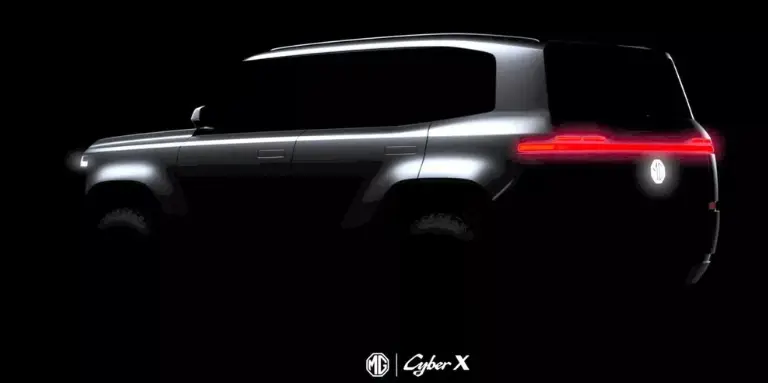


The Cyber X stands out for its high-tech equipment : LED light signature across the entire width, backlit MG logo, flush door handles and, inside, a latest-generation infotainment system developed in partnership with Oppowith artificial intelligence and digital assistants.
On the technical side, the Cyber X is designed for a real range estimated at between 400 and 450 km WLTPThis is made possible by a high-capacity battery and, potentially, semi-solid cells. The driving aids are provided by a specialised AI chippromising an advanced semi-autonomous experience. With a price positioning under €25,000 for EuropeMG has a clear ambition: to democratise access to cutting-edge electrical technology.
See also our article :
An aggressive pricing strategy under geopolitical tension with the United States
The trade war, which began in 2018 under President Donald Trump, peaked in April 2025 with unprecedented mutual retaliation.
While US tariffs on Chinese goods reach 145 % (including an anti-fentanyl tax of 20 %), and Beijing retaliated by raising its own taxes to 125 % on US imports since 12 AprilChinese electric vehicle manufacturers are accelerating their technological disruption in order to offset trade barriers.
See also our article :
It also referred the matter to theWTOdenouncing a "coercive practice" . There is a macroeconomic risk associated with this tug-of-war: according to the WTO, a prolongation of the conflict could lead to a 7 % fall in global GDP and a 80 % drop in Sino-American trade.
"The current complexity of what is happening, with a changing geopolitical, economic and commercial landscape, is unprecedented in my 32-year career in the automotive industry."
Ola Kallenius, Managing Director of Mercedes-Benz
As a result, the Shanghai Motor Show 2025 is unveiling a an industrial response combining low-cost innovation and geopolitical optimisationThis is reflected in the strategies of BYD, Geely and MG.
The example we have is the BYD Seagull, priced at €8,800 as previously stated. Thanks to in-house production of LFP batteries, theengine integrationand chips and a optimised logisticsBYD reaches a 30 % production cost lower than that of its Western rivals.
Stated target for 2025: 6 million electric vehicles soldwhile maintaining margins around 15 %. How can we do this? Through an offshore industrial network (particularly in Thailand and Hungary) and direct subsidies covering up to 10 % of the final priceunder a framework contested by the European Union within the WTO.
See also our article :
Foreign manufacturers: winning back and repositioning
Volkswagen and the "In China, for China" challenge
Chinese manufacturers are consolidating their technological dominance despite Western tariffs, Volkswagen adopts a hyper-location strategy to win back the world's biggest car market, which is none other than the United States. China.
The Shanghai Motor Show 2025 marks the launch of an unprecedented offensive, with 30 new locally-designed electric models planned by 2030of which 20 electric vehicles by 2027. A strategic change of scale, dictated both by competitive pressure and geopolitical realities.
Volkswagen is no longer content to simply adapt its vehicles to the Chinese market: it is now designing them specifically for this market, with a locally-based organisation. The Volkswagen China Technology Center (VCTC), based in Hefeiplays a central role. Thanks to local 100 % R&D teams and strategic partnerships with SAIC and FAWthe development cycles reduced to 34 monthscompared with more than 50 previously.
"The Volkswagen Group has shaped the mobility landscape in China for more than four decades. Today we are opening a major new chapter. Like 40 years ago, the next chapter in the Volkswagen Group's history in China begins in Shanghai, with the first models developed entirely locally. Thanks to our consistent 'In China, for China' strategy, we are playing a leading role in the era of intelligent and fully connected vehicles, while remaining true to Volkswagen's DNA: the highest standards of quality and safety."
Ralf Brandstätter, Member of the Board of Management of Volkswagen AG for China and CEO of Volkswagen Group China.
Two new platforms are structuring this approach:
- CMP (Compact Main Platform) dedicated to the compact segment, which accounts for 50 % of the Chinese electric car market.
- China E-Architecture A local architecture integrating advanced ADAS systems and tailored digital services, in line with the expectations of young Chinese urbanites.
In terms of on-board intelligence, Volkswagen is banking on the Carizon joint venture (Cariad x Horizon Robotics), with a clear objective: offer level 2++ autonomous driving systems from 2026which can rival the offerings from BYD or Nio.
In addition, at the heart of the VW stand in Shanghai, 3 concepts structure this "made in China" roadmap:
- ID. Aura A premium electric saloon with extended range (thanks to a range extender), designed to compete with Tesla and China's large road cars.
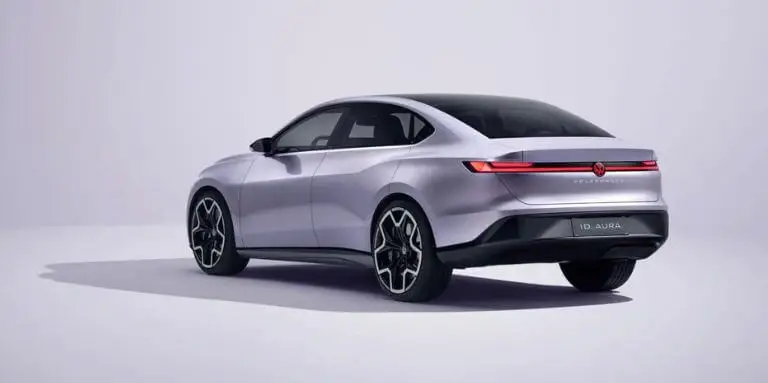
- ID. Evo A compact electric SUV with an augmented reality head-up display and ultra-fast batteries (charged from 10 to 80 % in 18 minutes).


- ID. Era A modular model focused on new mobility uses: robotaxi services, sharing, light logistics.
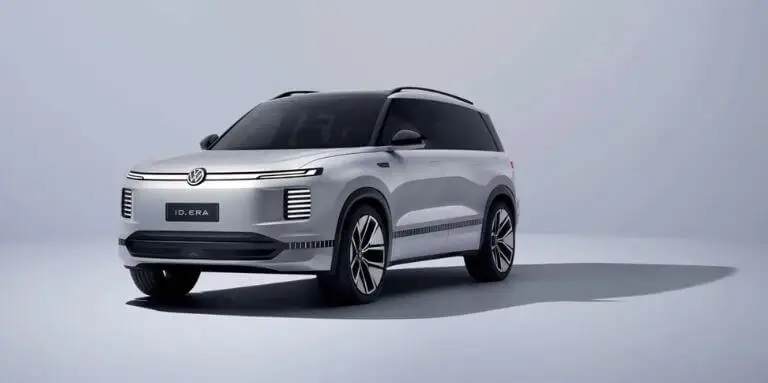
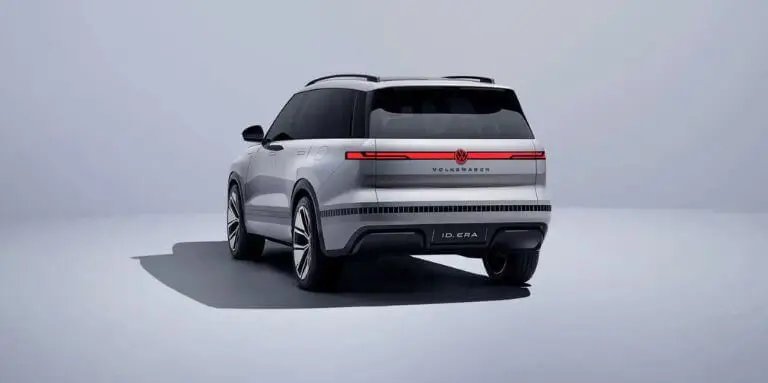
Volkswagen is not just banking on its core brand. Through Audi, it is pursuing a dual premium strategy:
- A6L e-tron A longer version of the electric saloon on the PPE platform, with a CLTC range of 800 km and two-way recharging.
- Audi E5 Sportback The first model in the new sub-brand Audiwithout the four rings, developed with SAIC. Its DNA: bold design, native connectivity, and a positioning geared towards young urbanites.
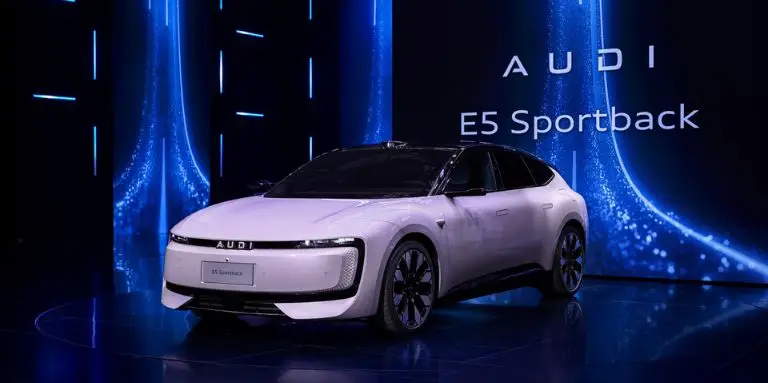
However, Volkswagen has no choice: to survive in the era of the connected electric vehicle, it must face the Chinese leaders on equal terms. This means :
- 4.5 billion invested by 2026 in electrification, digitalisation and partnerships in China.
- A strategic collaboration with CATLThis will enable certain Volkswagen models to be fitted with the new Shenxing 2.0 batteries, as previously announced.
- From aggressive pricing on future CMP modelspositioned between €20,000 and €25,000, to compete directly with the BYD Dolphin, Geely Geometry and other local stars in the segment.
See also our article :
Toyota: a late but targeted offensive
Long accused of falling behind in the race towards electrification, Toyota, Nissan and Cadillac took advantage of the Shanghai 2025 Motor Show to reposition their image on the Chinese market.
Cautious about going all electric for a while, Toyota steps up a gear. Its response is strategic and collaborative. Having briefly presented it above, the bZ7a 5-metre electric saloon, marks a turning point: entirely co-developed with GACshe takes a ADAS level 2++ system and targets references such as Tesla Model S.
Toyota is also aiming to 30 % of its sales of electric cars by the end of 2025, while streamlining its range to avoid duplication. LFP battery production via a strategic joint venture with CATL to secure its supply chain and reduce costs.
Commercial vehicles and intelligent recharging solutions: what opportunities for corporate fleets in 2025?
While the China exceeds 51 % market share for electric vehiclesIt is now imposing its standards on a global scale, redefining the criteria of choice for companies looking for high-performance, economical and sustainable solutions.
Chinese manufacturers, led by BYD, Geely, Dongfeng or LeapmotorIn Shanghai they presented a complete range of 100 % electric commercial vehicles, including the vansand compact vansand pick-ups and light commercial vehicles.
But that's not all: they will be offered either in full battery or range-extender versiondesigned to cover both the last urban kilometre and long-distance missions.
Key examples :
- As a reminder, BYD incorporates its God's Eye driver assistance systemeven on its commercial vehiclesIt offers advanced connected interfaces that are accessible even to very small businesses.
- Leapmotor B10developed with Stellantisstands out as a Modular electric SUV/van for the European marketwith a top-of-the-range cabin, long range and connectivity designed with fleet managers in mind.
In addition, innovations such as the Predict4Range from Valeo (intelligent thermal management) or Ineez™ Wireless Air Chargingas presented at this year's motor show, offer a tangible gains in autonomy and simplified day-to-day use.
Conclusion: China sets the pace for tomorrow's cars
Le Shanghai Motor Show 2025 sounded like a bolt from the blue: Chinese electrical innovation, driven by a disproportionate ambition and a industrial agility is redefining global mobility standards. Whether it's revolutionary battery technologies, disruptive driver assistance systems or boldly designed models, the Chinese manufacturers have proved their ability to anticipate market needs and impose their vision.
Faced with this revolution, professionals find themselves at a crossroads: seize the opportunities offered by electrification or risk being left behind. The stakes are high, because the the transition to green mobility is not limited to the acquisition of electric vehicles. It implies a profound transformation of fleet management methods, optimisation of recharging infrastructures and adaptation to the new realities of the market.
For professionals, the lessons are clear:
- L'electricity supply is now maturecompetitive and highly technological,
- The standards of connectivity, d'autonomy and total cost of ownership (TCO) align with business needs,
- Electricity is no longer a constraint, but an accelerator of performance, brand and sustainability.
At BeevWe are convinced that the electricity transition must be simple, cost-effective and personalised. Whether you are a SMESa community or a large groupWe can help you from A to Z with your sustainable mobility project:
- Monitoring and fleet manager,
- Advice on the choice of vehicles,
- Customised financing solutions,
- Installation of intelligent recharging infrastructures,
- And of course, regulatory and tax support.
